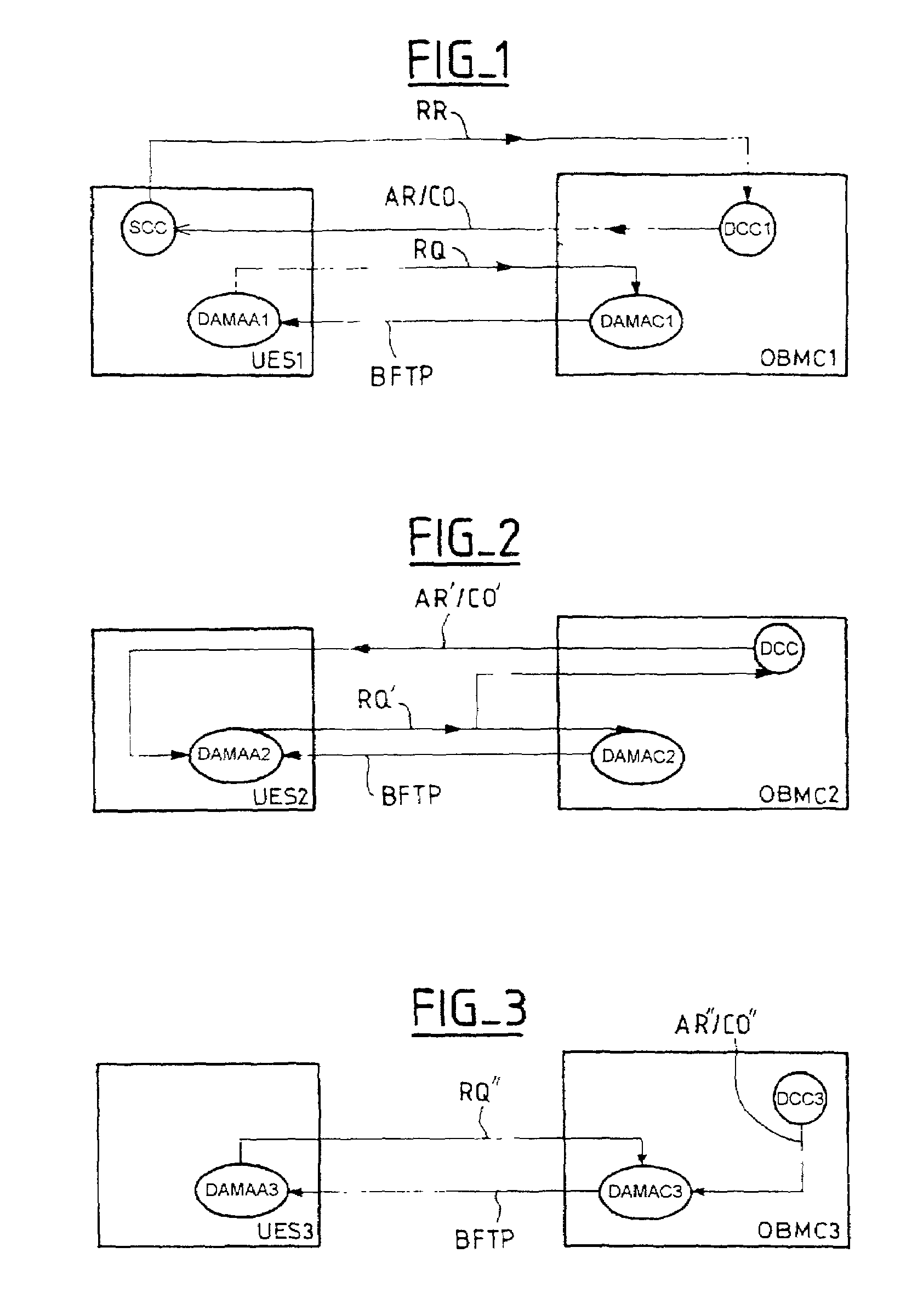Device for managing resources for a satellite telecommunication system
a satellite telecommunications and resource manager technology, applied in the field of satellite telecommunications resource manager, can solve the problems of loss of data packets, buffer capacity is limited, and insufficient,
- Summary
- Abstract
- Description
- Claims
- Application Information
AI Technical Summary
Benefits of technology
Problems solved by technology
Method used
Image
Examples
Embodiment Construction
[0067]FIG. 4 is a block diagram of one embodiment of a resource manager in accordance with the invention, showing only what is essential for preventative congestion control. The manager includes:[0068]a part specific to each user station UES, and situated in that station, and[0069]a central entity CE common to all the stations (i.e. common to all the links between a given satellite and user stations), or common to a subset of stations (access providers or network providers).
[0070]In a first embodiment, the central entity CE is on board the satellite. In a second embodiment, the central entity CE is on the ground, for example in one of the user stations, or it can be distributed between a plurality of control stations. The operating principle is unchanged. The embodiment located on the ground has the advantage of reducing the payload of the satellite but the drawback of requiring additional signaling messages between the ground and the satellite.
[0071]In both embodiments the call con...
PUM
 Login to View More
Login to View More Abstract
Description
Claims
Application Information
 Login to View More
Login to View More - R&D
- Intellectual Property
- Life Sciences
- Materials
- Tech Scout
- Unparalleled Data Quality
- Higher Quality Content
- 60% Fewer Hallucinations
Browse by: Latest US Patents, China's latest patents, Technical Efficacy Thesaurus, Application Domain, Technology Topic, Popular Technical Reports.
© 2025 PatSnap. All rights reserved.Legal|Privacy policy|Modern Slavery Act Transparency Statement|Sitemap|About US| Contact US: help@patsnap.com



